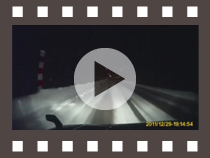
Development objectives for snow blowers that afford automated operation
Snow blowers that afford automated operation have two development objectives. One is to shorten the hours of traffic suspension by maintaining operational safety during snowstorm-induced poor visibility. The other is to replace two operators with a single operator in order to alleviate shortages of experienced operators from demographic aging.
Spring snow removal at mountain passes reopens highways buried under snow. In removing snow from such roads, special measures are taken to confirm the location of the roadway.
Technologies that support the automated operation of winter maintenance vehicles
To realize labour-saving, automated snow blowers, the following technologies are being developed.
Once these Quasi-zenith satellites can cover all of Japan for 24 hours a day, it will be possible to achieve stable, accurate positioning even in deep valleys and in urban areas with skyscrapers. The location information is used in combination with 3D maps toward automating snow removal. Millimeter-wave radar is being tested as a technology that can detect objects in heavy snowstorms.
We performed a detection experiment using millimeter-wave radar (76 GHz) and dedicated software under simulated snowstorm conditions (snow accretion to radar, snow accumulation on a vehicle, and snowfall between the radar unit and the vehicle). The experiment proved that the radar can detect objects, although the obstacle detection performance varies.
Quasi-zenith satellites
These travel in elliptical orbits above Japan. When four are in full operation in 2018 and are used in combination with GPS of the U.S.A., the positioning error is expected to be reduced to 6 cm from the current 10 m.
Millimeter-wave radar
Objects within 100 m can be detected even in snowstorms and fog.
Stereo camera
Unlike millimeter-wave radar, a stereo camera can detect pedestrians and cyclists.
3D Map
This map was developed from point-cloud data that were obtained by a mobile mapping system. The map indicates the centerline, curbs and road accessories, as well as the locations of obstacles and where snow is not to be expelled.

